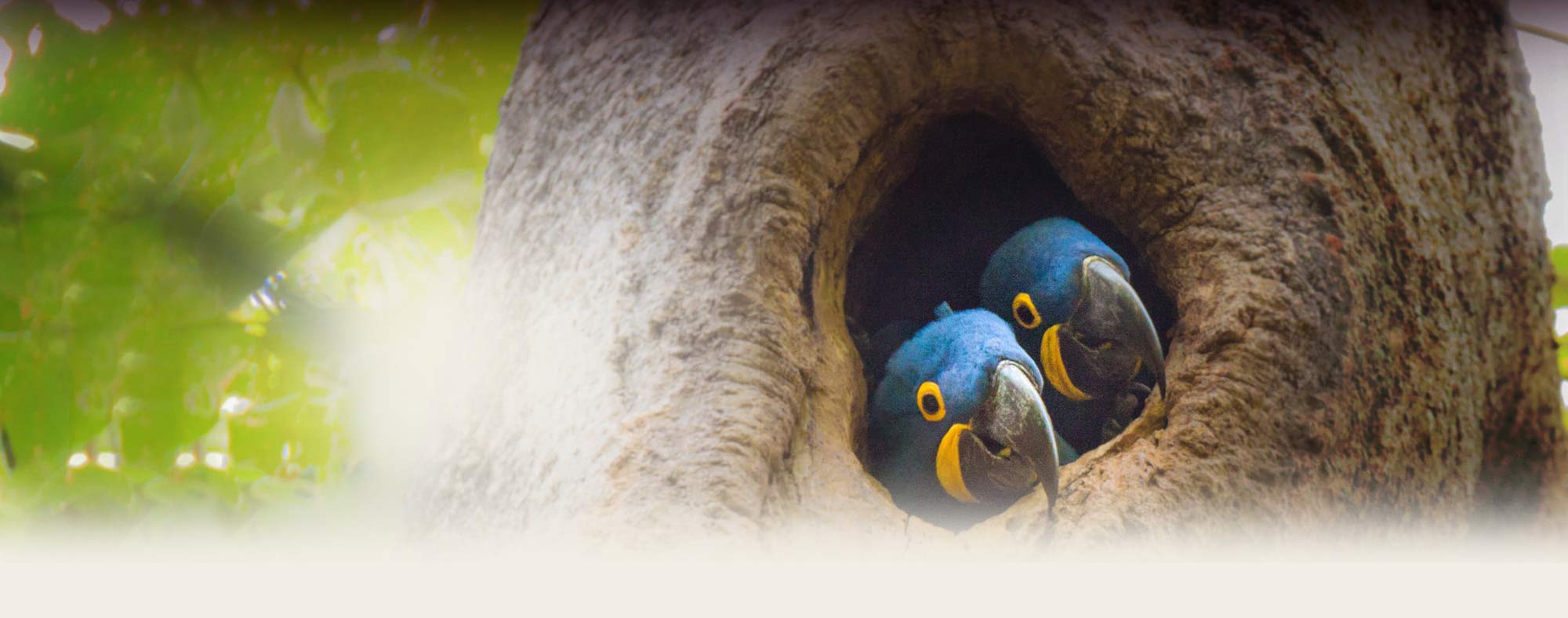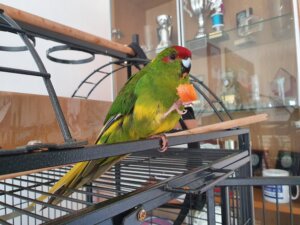Can You Colony Breed Kakarikis?
Yes, you can colony breed Kakarikis. This method involves housing multiple birds together.
Colony breeding Kakarikis can be both rewarding and challenging. These small, colorful parrots are social and active, making them interesting pets. Keeping them in a colony can enhance their natural behaviors and social interactions. But, it also requires careful planning and monitoring.
You must ensure they have enough space to avoid conflicts. Proper diet, nesting sites, and health care are crucial. This introduction will explore the essentials and considerations for successful colony breeding of Kakarikis, helping you decide if it’s the right approach for you. Understanding their needs and behaviors will help create a harmonious and thriving colony. Let’s dive into the world of Kakarikis and their colony breeding potential.
Introduction To Kakarikis
Kakarikis are small, colorful parrots native to New Zealand. Colony breeding Kakarikis is possible with proper care and space. These birds thrive in groups, making them ideal for colony environments.
Kakarikis are small, colorful parrots native to New Zealand. Their vibrant plumage and playful nature make them popular pets. These birds are known for their intelligence and curiosity. They thrive in environments that stimulate their minds. Kakarikis, also known as New Zealand parakeets, belong to the genus Cyanoramphus. They are one of the few parrot species that can breed in colonies. This trait makes them unique among parrot species.Species Overview
Kakarikis come in several different species. The most common ones are the Red-crowned and Yellow-crowned Kakarikis. The Red-crowned Kakariki has a bright red patch on its head. The Yellow-crowned Kakariki has a striking yellow crown. These birds are medium-sized, typically measuring around 25 cm in length. They have strong beaks and zygodactyl feet, which means two toes point forward and two backward. This adaptation helps them climb and grasp objects easily.Unique Characteristics
Kakarikis are known for their active and energetic behavior. They love to explore and interact with their environment. These birds are also very vocal, often chattering and mimicking sounds they hear. Another unique characteristic is their breeding habits. Unlike many parrots, Kakarikis can breed in colonies. This means multiple pairs can nest in the same area. This social structure is rare among parrot species. Their diet consists mainly of seeds, fruits, and vegetables. In the wild, they forage on the ground and in trees. Providing a varied diet in captivity helps maintain their health and wellbeing. Kakarikis are also remarkable for their ability to adapt. They can live in a range of habitats, from coastal areas to forests. This adaptability makes them resilient and versatile birds. “`Benefits Of Colony Breeding
Colony breeding Kakarikis can be a rewarding experience. This method offers numerous benefits for both the birds and the breeder. By allowing Kakarikis to breed in a colony, you create a more natural and enriching environment for them. Let’s explore some key benefits of colony breeding.
Social Interaction
Kakarikis are social birds. They thrive in a setting where they can interact with others. In a colony, they can form bonds and establish social hierarchies. This leads to healthier and happier birds. Social interaction is crucial for their mental well-being.
When Kakarikis engage with each other, they exhibit a wider range of behaviors. This interaction helps them stay active and mentally stimulated. Breeding in isolation can lead to stress and boredom. Colony breeding provides a more dynamic and engaging environment.
Natural Behavior
In a colony, Kakarikis can display natural behavior. They can forage, play, and communicate as they would in the wild. This natural setting promotes their physical and mental health.
By observing natural behaviors, you can gain valuable insights into their needs and preferences. For instance, you can identify favorite foods or preferred nesting sites. This information helps you provide better care and improve the breeding process.
Colony breeding also supports the development of strong parental skills. Birds learn from each other, observing and mimicking experienced breeders. This communal learning environment leads to healthier chicks and more successful breeding cycles.
| Benefits | Description |
|---|---|
| Social Interaction | Improves mental well-being and reduces stress |
| Natural Behavior | Encourages natural instincts and healthier birds |
Setting Up The Aviary
Creating the perfect habitat is crucial for colony breeding Kakarikis. The aviary should provide a safe and comfortable environment for your birds. Below are some key aspects to consider.
Space Requirements
Kakarikis need plenty of space to fly and exercise. A small enclosure can lead to stress and health issues. Aim for an aviary that is at least 10 feet long, 5 feet wide, and 7 feet high.
| Number of Birds | Recommended Space |
|---|---|
| 2-4 Birds | 10x5x7 feet |
| 5-8 Birds | 15x8x7 feet |
| 9-12 Birds | 20x10x7 feet |
Ensure there is enough room for all birds to spread their wings and fly. This reduces the risk of fights and injuries.
Essential Equipment
A well-equipped aviary is essential for healthy Kakarikis. Here is a list of must-have items:
- Perches: Varying heights and diameters help exercise their feet.
- Feeding Stations: Multiple stations to prevent competition.
- Water Containers: Fresh water should be available at all times.
- Nesting Boxes: One box per pair, plus extra to avoid conflicts.
- Toys: Provide mental stimulation and reduce boredom.
- Plants: Safe plants can create a more natural environment.
Regularly check and clean all equipment to maintain hygiene. This ensures the health and happiness of your Kakarikis.
Choosing The Right Kakarikis
Choosing the right Kakarikis for colony breeding is crucial. It ensures a healthy and harmonious environment. By selecting the right birds, you can avoid potential issues. This process involves evaluating the health and gender ratios of the Kakarikis.
Selecting Healthy Birds
Healthy Kakarikis are active and alert. They have bright eyes and smooth feathers. Check for any signs of illness like discharge or unusual behavior. Healthy birds eat well and are curious about their surroundings. Always source your birds from reputable breeders. They ensure the birds are healthy and free from diseases.
Gender Ratios
Maintaining the right gender ratio is important. Ideally, have more females than males. This reduces aggression and competition among males. A common ratio is one male for every two females. This balance promotes a peaceful colony. It also helps in successful breeding. Too many males can lead to fights and stress for the birds.
Feeding And Nutrition
Feeding and nutrition are key to successfully colony breeding Kakarikis. A balanced diet ensures these lively birds thrive and reproduce healthily. Proper nutrition helps them maintain vibrant feathers and robust health.
Diet Essentials
Kakarikis need a varied diet. Seeds, fruits, and vegetables should be the staples. Fresh produce must be available daily. Apples, carrots, and leafy greens are excellent choices. Include a high-quality seed mix. It should contain millet, canary seed, and sunflower seeds.
Supplements And Treats
Supplements are important for optimal health. Cuttlebone provides calcium. Mineral blocks also offer essential nutrients. These support bone health and egg production.
Treats can be given occasionally. Millet sprays are a favorite. They also enjoy small pieces of nuts. These should be given in moderation. Too many treats can lead to obesity.

Credit: feistyfeathers.com
Health And Wellness
Maintaining the health and wellness of your Kakarikis is vital. These birds are active and social, requiring proper care to thrive. Understanding common health issues and preventative measures can ensure a happy, healthy flock.
Common Health Issues
Kakarikis can suffer from several health problems. Respiratory infections are common. Symptoms include wheezing and nasal discharge. Feather plucking is another issue. It can indicate stress or nutritional deficiencies. Parasites, both internal and external, can also affect Kakarikis. Regular checks help identify these problems early.
Preventative Care
Preventative care is essential for colony breeding Kakarikis. Provide a balanced diet with fresh fruits, vegetables, and quality seeds. Ensure clean water is always available. Regular cage cleaning reduces the risk of infections. Create a stress-free environment. Avoid overcrowding and ensure enough space for each bird. Regular vet check-ups can catch potential issues early. Keep an eye on their behavior and physical condition. Early intervention is key to maintaining their health.
Breeding Behavior
Understanding the breeding behavior of Kakarikis is crucial for successful colony breeding. These colorful parrots have unique habits that make them fascinating to observe. By learning their courtship rituals and nesting preferences, you can create an ideal environment for breeding.
Courtship Rituals
Kakarikis have charming courtship rituals. Males often perform a dance to attract females. They bob their heads and chirp softly. This dance is a sign of affection and readiness to mate. The female responds by preening the male’s feathers. This mutual grooming strengthens their bond.
Nesting Preferences
Kakarikis prefer specific nesting conditions. They often choose cavities in trees or nest boxes. The nest should be secure and away from disturbances. Provide plenty of nesting material like wood shavings and soft leaves. These materials help the female build a comfortable nest.
Managing Conflicts
Colony breeding Kakarikis can be a rewarding experience. But managing conflicts is crucial for a peaceful aviary. Understanding aggression and knowing how to resolve conflicts can ensure a harmonious environment.
Identifying Aggression
Aggression in Kakarikis can be subtle or obvious. Watch for signs like:
- Feather plucking
- Chasing
- Pecking
- Vocal distress
These behaviors indicate stress and potential harm. Act quickly to prevent escalation. Separate the aggressor if necessary to protect the flock.
Conflict Resolution Strategies
Resolving conflicts involves several strategies. First, ensure the aviary is spacious. Kakarikis need room to fly and avoid each other.
Next, provide plenty of resources. More perches, food bowls, and nesting boxes reduce competition. A well-fed and comfortable bird is less likely to be aggressive.
Observe the flock dynamics regularly. Note which birds are more aggressive. You might need to rehome particularly aggressive birds for the safety of others.
If aggression persists, consult an avian vet or a bird behaviorist. They can offer professional advice tailored to your specific situation.
Monitoring And Record Keeping
Monitoring and record keeping are essential for successful colony breeding of Kakarikis. Proper records help track breeding pairs, health issues, and other important data. This ensures a healthier and more productive breeding environment.
Tracking Breeding Pairs
Track each breeding pair carefully. Assign unique identifiers to each pair. Note down their mating dates and any observed behaviors. This helps in identifying patterns and improving breeding success rates. Keep a log of any changes in pairings. This provides valuable insights into their compatibility.
Health Records
Maintain detailed health records for each bird. Note any signs of illness or stress. Record treatments and outcomes. This helps in managing and preventing diseases. Regularly update these records. This ensures timely interventions and promotes overall wellbeing.

Credit: lafeber.com

Credit: www.youtube.com
Frequently Asked Questions
What Is Colony Breeding?
Colony breeding is when multiple pairs of birds breed in the same space. This method imitates natural conditions.
Can Kakarikis Be Colony Bred?
Yes, Kakarikis can be colony bred. They are social birds and adapt well to group settings.
What Are The Benefits Of Colony Breeding Kakarikis?
Colony breeding allows for natural behaviors. It can increase breeding success and social interaction among the birds.
Are There Risks In Colony Breeding Kakarikis?
Yes, there can be risks like aggression and competition. Proper space and monitoring can mitigate these issues.
Conclusion
Breeding Kakarikis in colonies can be a rewarding experience. These birds thrive in group settings, promoting natural behaviors. Ensure ample space and resources for each bird. Monitor their health regularly. Intervene if any aggressive behavior arises. Consistent care leads to a successful breeding environment.
Share your experiences and learn from others. Enjoy watching your Kakarikis flourish in their colony. Happy birdkeeping!
Hello Dear, I'm Poli Kolymnia, owner of many birds (including budgies).
With a deep passion for these feathered companions, I'm here to share my expertise and extensive knowledge on birds care.
My articles cover essential topics like diet, housing, care, and health, providing practical tips to help you create a happy and thriving environment for your birds.



